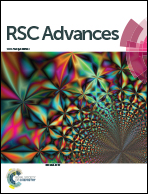Optimization of a membrane cleaning strategy for advanced treatment of polymer flooding produced water by nanofiltration
Abstract
Recycling the polymer flooding produced water (PFPW) into polymer flooding oil extraction after advanced treatment by nanofiltration (NF) is a reasonable choice for the effective management of PFPW. However, membrane cleaning is indispensable because of the inevitable membrane fouling phenomenon. In this study, the NF process was illustrated to treat synthetic PFPW by taking anion polyacrylamide (APAM) and crude oil as target foulants, and during which membrane cleaning was investigated. Different cleaning agents were studied and used in combination. A single factor experiment and orthogonal experiment were conducted to optimize the cleaning strategy. Flux measurements, salt rejection experiments, AFM, a contact angle goniometer and ATR-FTIR were employed to evaluate the cleaning performance. The results indicate that the optimized alkaline formulated cleaning solution (pH = 11) consists of 0.05% EDTA, 0.2% sodium pyrophosphate and 0.2% SDS. The optimized cleaning strategy should include two steps: (i) the first step is to clean with the alkaline formulated cleaning agent for 0.5 h; (ii) the second step is to clean with a HCl solution (pH = 2) for 0.5 h. The optimized cleaning strategy can fully recover the membrane flux without damaging its other properties, including desalting ability, surface morphology, hydrophilicity and chemical bonds.


 Please wait while we load your content...
Please wait while we load your content...